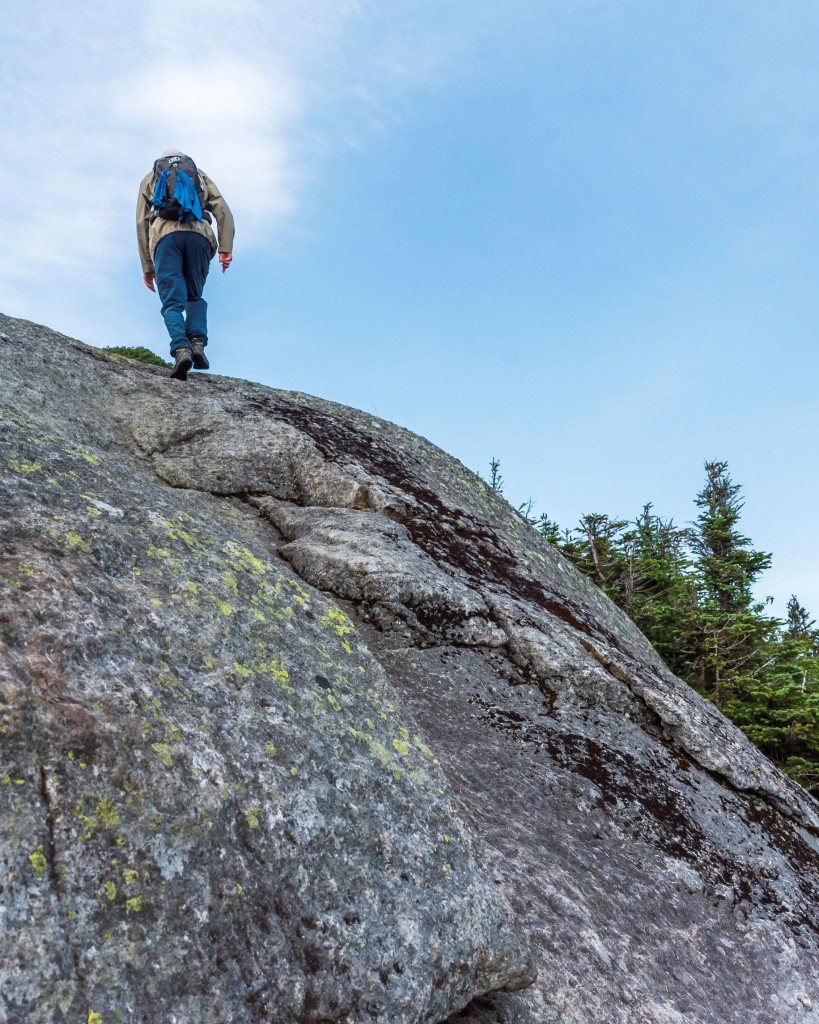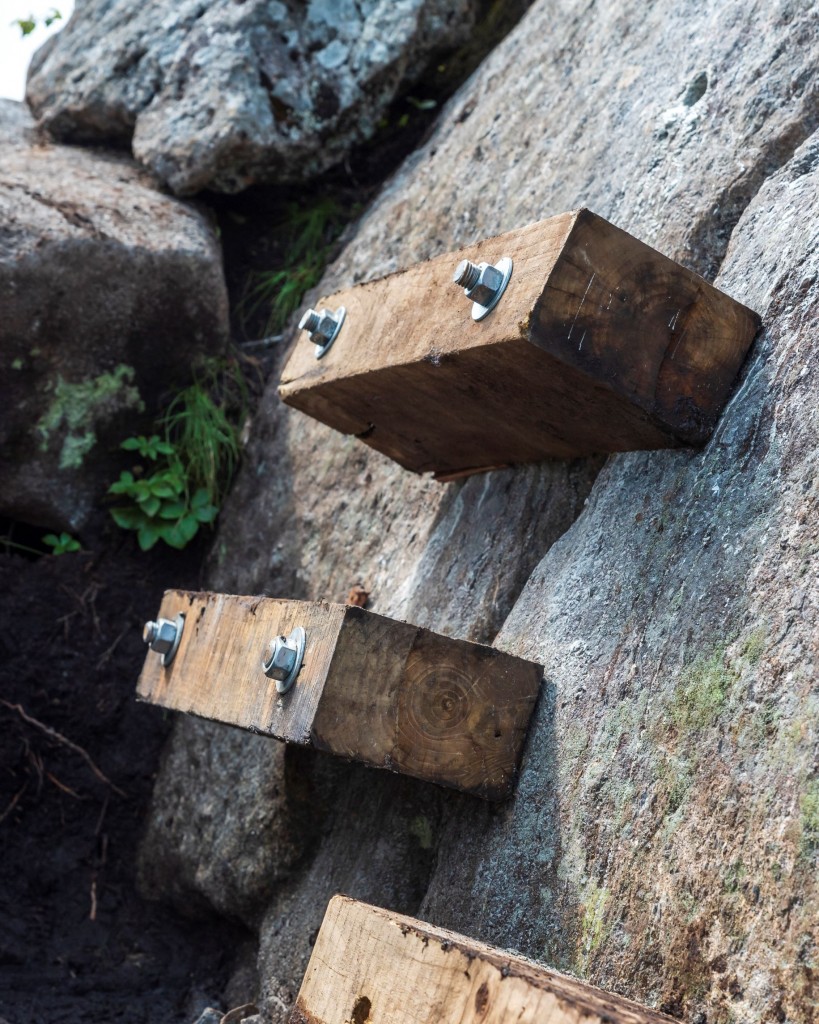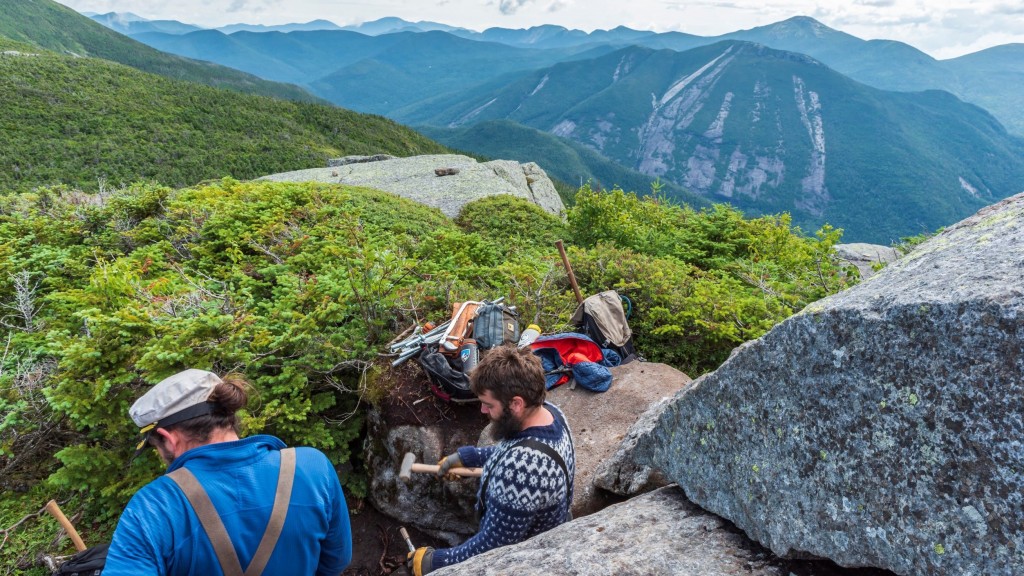Exposed to the Elements: Alpine Trail Work on High Peaks
Exposed to the Elements: Alpine Trail Work on High Peaks
By Andrew Hamlin, former Trails Coordinator
Let’s head above treeline to one of the Adirondack Park’s highest summits to explore alpine trail work. This is a unique setting in the Adirondacks that requires some different tactics from us as trail workers to approach effectively.
First, what do I mean when I say “treeline”? This is the line on a mountain above which no trees grow. In the Adirondack Park, this area is also home to the alpine zone, which is a highly sensitive ecosystem left over from the Ice Age. Alpine vegetation grows in thin, acidic soils that easily erode away if stepped on, which means that it only takes a few bootsteps to kill many of these plants. As a result, we need to take extra precautions both as hikers and as trail workers to ensure that this ecosystem remains protected.
However, it isn’t quite as easy to define a trail above treeline as it is in the forests below. Whenever we break treeline, we find ourselves in a wide-open space with very few physical obstructions. Without a clear reference point, hikers can easily wander off-trail. Because this causes immediate impacts to alpine vegetation, we need to do everything we can through trail design to ensure that hikers know where the trail is and feel comfortable staying on it. Thankfully, we have a few tools at our disposal to make this happen, including:

Blazes – The most basic trail-defining feature found above treeline are yellow blazes. These are painted on bare rock to define the path for hikers. Pretty simple, though they require a lot of annual maintenance to remain visible.
Rock Cairns – Perhaps the most iconic alpine trail feature is the rock cairn. Not to be mistaken with rock stacks, these 2-4 foot tall structures are placed at regular intervals on open summits to guide hikers through inclement weather. These require a lot of work to construct, as they need to stand up against gale-force winds and be placed strategically so that they are visible from certain angles.
Ladders – In specific circumstances, we can also use lumber. Last month, our professional trail crew built a ladder on the trail to Iroquois. This decision was made after the land manager saw significant impacts around the base of a steep rock scramble near the summit. Instead of taking the scramble, hikers were skirting around it and impacting alpine vegetation along the way. By establishing a more defined route up the scramble, the hope is that hikers will stay on the trail and, most importantly, off of the surrounding vegetation.

Another aspect of alpine trail work is, of course, the unique challenges it presents. Not only do trail workers have to take extra care to avoid damaging alpine vegetation, but they also have to work with limited resources. For example, stones to build structures like cairns or rock walls are often carried from miles away. Workers also have to be very careful not to remove existing stones or materials from the summit as that might have long-term impacts in the area. We are looking to minimize impacts, not create more.
All in all, proper trail design is key to balancing outdoor recreation and resource protection in the alpine zone. Whether it’s through building cairns or painting blazes, providing visual cues to guide hikers along the trail helps minimize impacts to alpine vegetation and maximizes the hiker experience.
A special thanks to The Waterman Fund, whose funding made this project possible. Through education, trail rehabilitation, and research, The Waterman Fund fosters the spirit of wildness and strengthens the stewardship and understanding of the alpine areas of Northeastern North America to conserve their ecological, cultural, and recreational values. You can learn more about them here.
You can support this important work by clicking here.

Related
Sustainable Mt Jo Long Trail Opens
October 16, 2023 — Lake Placid, NY — After three years of work by professional […]
High Peaks Sustainable Trails Make Progress
August 10, 2023 — Lake Placid, NY — ADK’s (Adirondack Mountain Club’s) professional trail crew has […]
ADK, Saranac Lake Improve Baker Mountain Trail
August 7, 2023 — Saranac Lake, NY — Through support from the Saranac Lake Local […]
Volunteers Advance Mt. Jo Trail Project
June 5, 2023 — Lake Placid, NY — Over the weekend, ADK (Adirondack Mountain Club) […]

